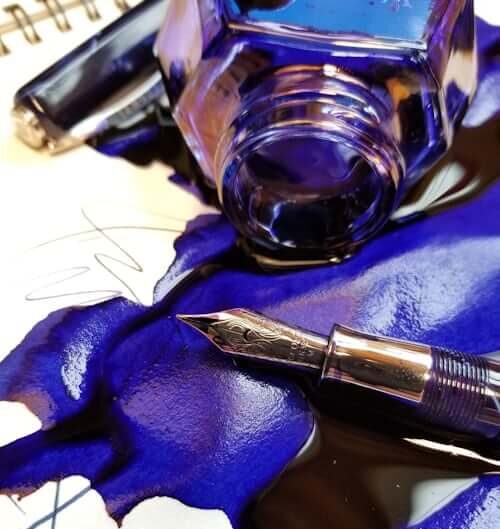Section 2: Step 0: The Pre-Cleaning Diagnostic
Before you touch that stain, let’s play detective for a moment. Rushing in is how good intentions lead to permanent damage. This quick, three-step check will set you up for success and save you from heartache.
First, you must identify your leather type. It’s easier than it sounds. Do the simple “water test.” Find a hidden spot (like a back flap or underneath a cushion) and place a tiny drop of water on it.
-
If the water beads up on the surface, you have Finished Leather. This protective coating is your best friend, allowing for stronger cleaning methods.
-
If the water is soaked in and darkens the spot, you have Unfinished Leather. This delicate, porous material needs a gentler touch.
Next, assess the stain itself. Is it a fresh smudge or has it been sitting for days? Fresh stains are always easier. Also, note if it’s just on the surface or if it looks deeply soaked in.
Finally, gather your supplies like a pro preparing for a mission. You’ll need: clean microfiber cloths, cotton swabs, distilled water, mild dish soap, rubbing alcohol (70% or higher), and a good leather conditioner. Having it all at your fingertips makes the process smooth and stress-free.
Section 3: The Tiered Methodology: Escalating Your Response
Now for the action plan. We use a “tiered” approach—always starting with the gentlest method and only getting more assertive if we need to. This is the safest way to get ink out of leather without any regrets.
Tier 1: The Gentle Approach (For ALL Leather Types)
Start here, especially if you have unfinished leather or are unsure. Mix a drop of mild dish soap with a cup of distilled water. Dampen a microfiber cloth and wring it out well. Gently blot the stain from the outside in. Never rub! Once the ink is gone, use a water-dampened cloth to remove any soap residue.
Tier 2: The Solvent Approach (For FINISHED Leather Only)
If soap and water didn’t work, and you’ve confirmed you have finished leather, it’s time for a gentle solvent. Rubbing alcohol is perfect because it breaks down the oily ink. Moisten a cotton swab with alcohol and test it on a hidden spot. If it’s safe, gently dab the stain—you’ll see the ink transfer onto the swab. This is the most effective way for how to get ballpoint pen off leather.
Tier 3: The Commercial Approach
For tough, set-in stains, a product made specifically as a leather ink stain remover is your best bet. Just be sure to follow the product instructions carefully.
Section 4: Advanced Scenarios & Troubleshooting
Life isn’t always simple, and neither are ink stains. Here’s how to handle some common tricky situations.
How to Remove Ink from Leather Car Seats: Act extra fast! Heat from the sun can “bake” the stain into the material. Follow the same tiered method, but be super diligent with the hidden spot test, as car leather dyes can be unique.
Dealing with Set-In Stains: If the stain is old, don’t lose hope. You may need to let the solvent work a bit longer. Try holding an alcohol-dampened cotton ball against the stain (without rubbing) for 30-60 seconds to loosen it before dabbing it away.
A Crucial Warning: Is your item made of suede or nubuck? If so, stop right here! These materials are brushed and incredibly delicate. The methods in this guide are for smooth leathers only and will ruin suede. For those, seeking a professional is the wisest course of action.
Section 5: The Non-Negotiable Final Step: Leather Aftercare
Congratulations on removing the stain! But the job isn’t quite finished. Think of cleaning like giving your leather a shower—it gets clean but can also dry it out. This final step is like applying moisturizer; it’s essential for keeping your leather healthy and beautiful.
Why is this so important? Cleaning, especially with a solvent like alcohol, strips away the natural oils that keep leather soft and supple. If you skip this, the leather can become dry, stiff, and even start to crack over time, creating a problem far worse than the original stain.
How to condition your leather: Once the cleaned area is completely dry, take a small amount of a quality leather conditioner. Apply it with a clean, soft cloth using gentle circular motions. Let it fully absorb. This simple five-minute task replenishes lost moisture, protects your leather from future wear and tear, and ensures your couch, bag, or jacket stays looking its best for years to come.
Section 6: Common Myths & Mistakes That Ruin Leather
Let’s bust some dangerous myths! Knowing what not to do is just as important as knowing what to do. Avoiding these common errors will save your leather from irreversible damage.
Myth: “Scrubbing harder gets the stain out faster.”
Truth: Please, never scrub! Scrubbing grinds the ink deeper into the leather’s pores and can permanently scar the surface. Your mantra should always be “blot and dab.” Use a gentle pressing and lifting motion.
Myth: “If alcohol works, bleach or acetone will work better.”
Truth: This is a recipe for disaster. Never use harsh chemicals like acetone, nail polish remover, or bleach. They are far too strong and will strip the color and finish right off your leather, leaving a bleached, ruined patch that cannot be fixed.
Myth: “If the stain is gone, the job is done.”
Truth: As we just covered, failing to condition the leather after cleaning leaves it vulnerable to drying and cracking. The stain is gone, but you’ve left the leather weakened. Always complete the process with a good conditioner to keep it protected and supple.


